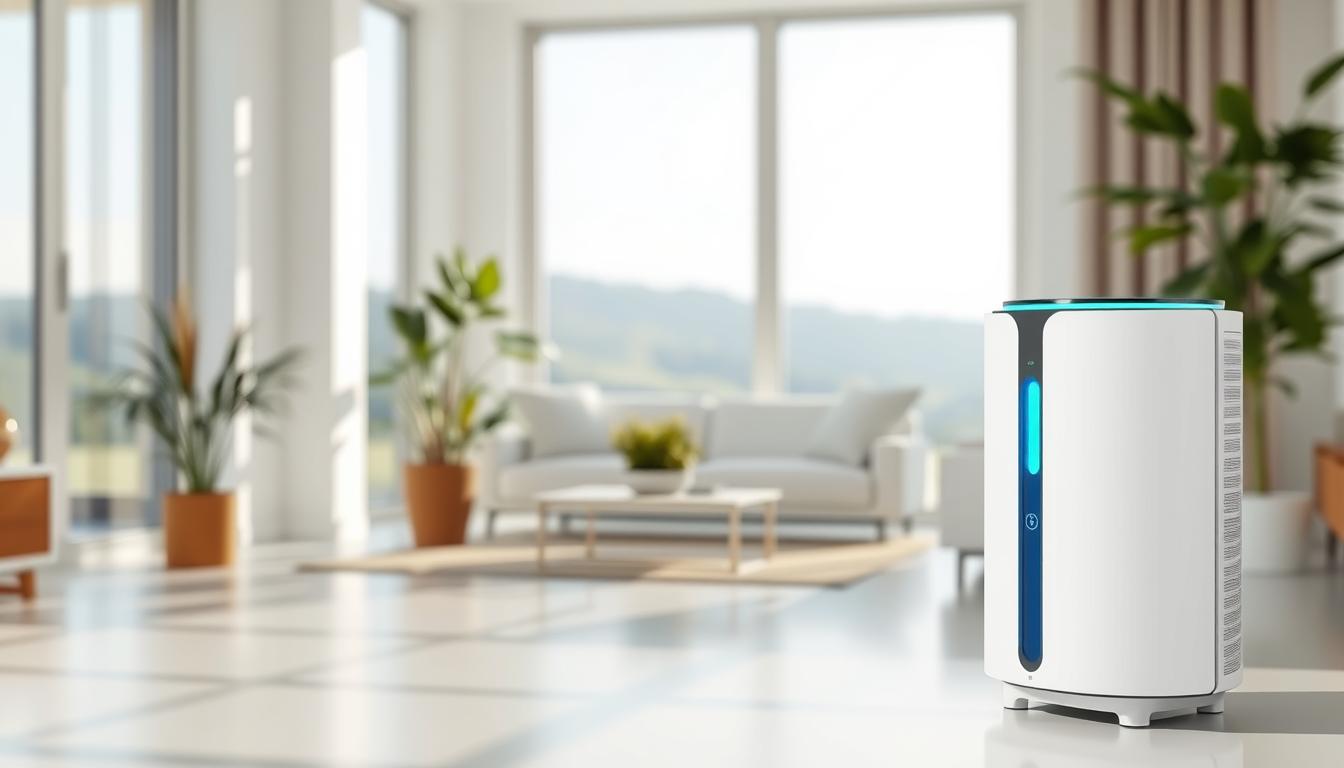Are you concerned about indoor air quality in your home or office? Negative ion air purifiers offer an effective solution for removing allergens, dust, and pollutants from the air, providing a fresher and healthier living environment. By harnessing the power of negative ions, these innovative devices can significantly improve air purification, leaving you with cleaner, more breathable air.
Negative ion air purifiers work by releasing negatively charged ions into the air, which attach to positively charged particles like dust, pollen, and smoke. This process causes these pollutants to become heavier and fall out of the air, making it easier for the purifier to capture and remove them. The result is a noticeable improvement in air quality, with fewer allergens and irritants circulating in your space.
Investing in a high-quality negative ion air purifier can provide numerous benefits for your health and well-being. By effectively removing airborne pollutants, these devices can help alleviate symptoms of allergies, asthma, and other respiratory issues. Additionally, cleaner air can promote better sleep, increased concentration, and an overall sense of freshness in your home or workspace.
Understanding Negative Ion Technology
Negative ion technology has gained popularity in recent years as a highly effective method for improving indoor air quality. This innovative air purification process harnesses the power of negatively charged ions to remove harmful particles, allergens, and pollutants from the air we breathe. By understanding how negative ion technology works, we can better appreciate its potential health benefits and the role it plays in creating a cleaner, healthier living environment.
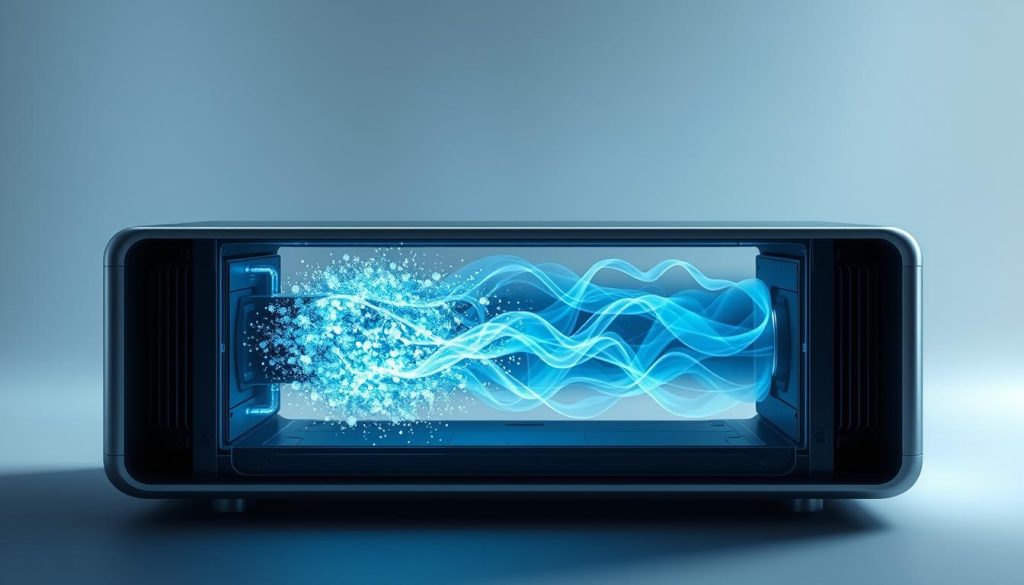
How Negative Ions Purify the Air
Negative ions are naturally occurring in environments such as waterfalls, beaches, and forests, contributing to the fresh, invigorating air we experience in these settings. In the context of air purification, negative ion generators emit a high concentration of negatively charged ions into the air. These ions attach themselves to positively charged particles like dust, pollen, smoke, and bacteria, forming larger, heavier clusters. As a result, these pollutants become too heavy to remain airborne and fall to the ground or surfaces, effectively removing them from the air we breathe.
The negative ion air purification process can be summarized in the following steps:
- Negative ion generators release a high concentration of negatively charged ions into the air.
- These negative ions attach to positively charged airborne pollutants, such as dust, pollen, smoke, and bacteria.
- The pollutants become heavier and fall out of the air, landing on surfaces or the ground.
- The air is left cleaner and fresher, with fewer harmful particles and improved indoor air quality.
Benefits of Negative Ion Air Purification
The use of negative ion technology in air purifiers offers numerous health benefits and contributes to a more comfortable living environment. Some of the key advantages include:
- Reduced allergies and respiratory issues: By removing allergens like pollen, dust mites, and pet dander from the air, negative ion air purifiers can alleviate symptoms for those suffering from allergies or respiratory conditions such as asthma.
- Improved mood and mental well-being: Exposure to negative ions has been linked to increased serotonin levels, which can help reduce stress, improve mood, and promote a sense of overall well-being.
- Enhanced sleep quality: Cleaner air and reduced allergens can lead to more restful, uninterrupted sleep, allowing you to wake up feeling refreshed and energized.
- Odor elimination: Negative ions can neutralize unpleasant odors from cooking, pets, or other sources, leaving your home smelling fresh and clean.
| Benefit | Description |
|---|---|
| Allergy relief | Removes allergens like pollen, dust mites, and pet dander |
| Improved mood | Increases serotonin levels, reducing stress and promoting well-being |
| Better sleep | Cleaner air leads to more restful, uninterrupted sleep |
| Odor elimination | Neutralizes unpleasant odors from cooking, pets, or other sources |
By harnessing the power of negative ion technology, air purifiers can significantly improve indoor air quality, providing a healthier and more comfortable living space for you and your family.
Key Features to Look for in a Negative Ion Air Purifier
When selecting a negative ion air purifier, it’s essential to consider several key features to ensure you choose the best device for your needs. Filtration efficiency is paramount, as it determines how effectively the air purifier removes pollutants, allergens, and other harmful particles from the air. Look for air purifiers with high filtration efficiency ratings, such as those with HEPA filters or advanced multi-stage filtration systems.
Coverage area is another crucial factor, as it dictates the size of the room or space the air purifier can effectively clean. Ensure that the air purifier you choose is designed to handle the square footage of your intended space. Opting for a device with a larger coverage area than needed can provide additional air purification benefits.
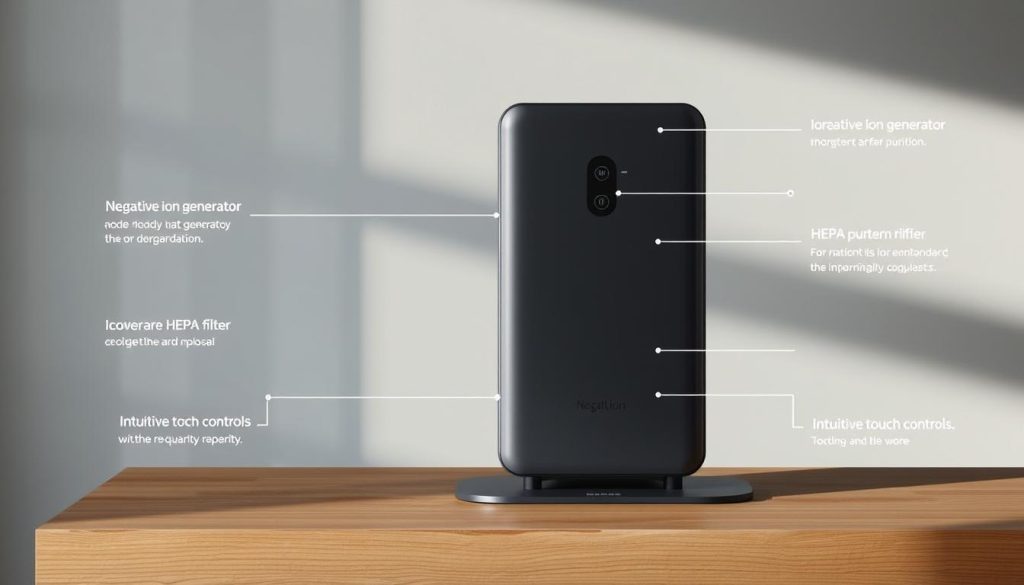
Noise level is an important consideration, especially if you plan to use the air purifier in bedrooms or quiet spaces. Seek out air purifiers with low noise levels, typically measured in decibels (dB), to ensure a peaceful environment. Many modern negative ion air purifiers feature quiet operation modes for overnight use.
Energy efficiency is another key feature to look for in a negative ion air purifier. Energy-efficient models can help reduce your electricity bills and minimize your environmental impact. Look for air purifiers with Energy Star certifications or those with low wattage requirements to ensure optimal energy efficiency.
Additional features to consider include filter replacement indicators, air quality sensors, and smart connectivity options. These features enhance the convenience and functionality of the air purifier, making it easier to maintain optimal air quality in your home or office.
Top Negative Ion Air Purifier Brands
When it comes to choosing a negative ion air purifier, several leading brands stand out for their innovative technology and exceptional performance. These top air purifier brands have earned the trust of consumers by consistently delivering high-quality products that effectively clean the air and improve indoor air quality.
Trademark Products
Each of these renowned brands offers a range of negative ion air purifiers designed to cater to different needs and preferences. Some of their trademark products include:
- Honeywell HFD-120-Q QuietClean Tower Air Purifier
- Germ Guardian AC4825 22″ 3-in-1 True HEPA Filter Air Purifier
- Winix 5500-2 Air Purifier with True HEPA
- Coway AP-1512HH Mighty Air Purifier
- Blueair Classic 605 Air Purifier with HEPASilent Technology
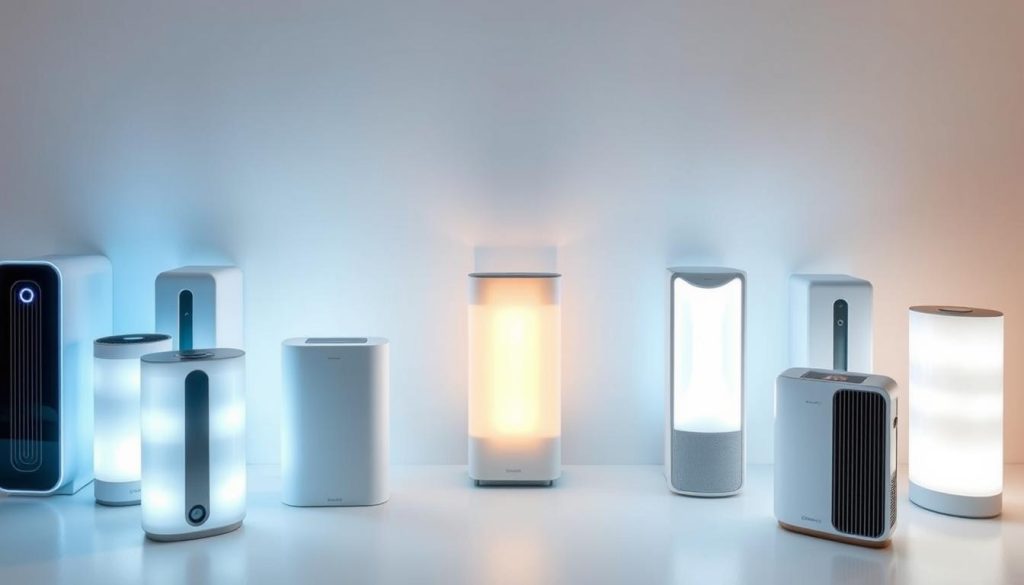
Comparative Analysis of Leading Brands
To help you make an informed decision, let’s compare some key aspects of these leading negative ion air purifier brands:
| Brand | Coverage Area | CADR Rating | Noise Level |
|---|---|---|---|
| Honeywell | 170 sq. ft. | 100 CFM | 40-50 dB |
| Germ Guardian | 167 sq. ft. | 125 CFM | 45-60 dB |
| Winix | 360 sq. ft. | 240 CFM | 40-55 dB |
| Coway | 361 sq. ft. | 246 CFM | 41-56 dB |
| Blueair | 775 sq. ft. | 500 CFM | 32-44 dB |
While each brand has its strengths, Blueair stands out for its impressive coverage area and high CADR rating, while maintaining relatively low noise levels. However, the best choice for you will depend on your specific needs and preferences.
Factors to Consider When Choosing a Negative Ion Air Purifier
When shopping for a negative ion air purifier, it’s essential to consider several key factors to ensure you select the best device for your needs. These factors include room size and coverage area, filtration efficiency and CADR ratings, noise levels, and energy consumption.
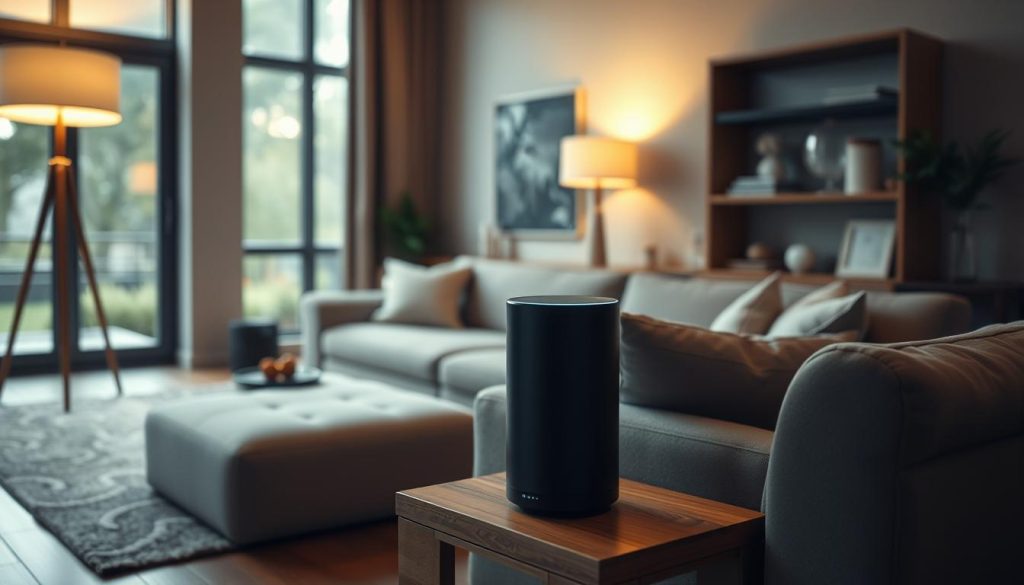
Room Size and Coverage Area
The first factor to consider is the size of the room or space you want to purify. Negative ion air purifiers come in various sizes, each designed to cover a specific square footage. Choose a device that can effectively purify the air in your intended space, whether it’s a small bedroom or a large living area.
Filtration Efficiency and CADR Ratings
Filtration efficiency is another crucial aspect to consider. Look for air purifiers with high Clean Air Delivery Rate (CADR) ratings, which indicate the device’s effectiveness in removing pollutants from the air. The higher the CADR rating, the more efficient the air purifier is at filtering out allergens, dust, smoke, and other airborne particles.
| Room Size | Recommended CADR Rating |
|---|---|
| Small (up to 299 sq. ft.) | 100-200 |
| Medium (300-699 sq. ft.) | 200-300 |
| Large (700+ sq. ft.) | 300+ |
Noise Levels and Energy Consumption
Noise levels and energy consumption are also important factors to keep in mind. If you plan to use the air purifier in a bedroom or quiet space, opt for a device with low noise levels to minimize disturbance. Additionally, consider the energy efficiency of the device to help reduce your electricity bills and environmental impact.
Maintenance and Upkeep of Negative Ion Air Purifiers
To ensure your negative ion air purifier continues to provide clean, healthy air, regular maintenance is essential. Proper care not only extends the lifespan of your device but also optimizes its performance, ensuring you breathe the highest quality air possible.
One of the most important aspects of air purifier maintenance is filter replacement. Depending on the model and usage, filters should be replaced every 3-6 months. A clogged or dirty filter can significantly reduce the purifier’s effectiveness, leading to decreased air quality and potential health risks. When replacing filters, always refer to the manufacturer’s guidelines for the correct type and size.
In addition to filter replacement, regular cleaning is crucial for maintaining optimal performance. Most negative ion air purifiers feature a removable pre-filter that captures larger particles, such as dust and pet hair. This pre-filter should be cleaned every 2-4 weeks using a soft brush or vacuum cleaner. The main unit should also be wiped down with a damp cloth to remove any accumulated dust or debris.
To further optimize your air purifier’s performance, consider the following tips:
- Position the purifier in an open, unobstructed area for maximum air circulation
- Keep the purifier running continuously for the best results, especially in high-traffic or polluted areas
- Regularly check the filter indicator light and replace filters promptly when needed
- Clean the air quality sensor every 2-3 months to ensure accurate readings and automatic adjustments
By following these simple maintenance steps and investing in quality filter replacements, you can ensure your negative ion air purifier continues to deliver clean, healthy air for years to come.
Real-World User Experiences and Reviews
When considering a negative ion air purifier, it’s essential to look beyond the technical specifications and delve into the real-world experiences of users. Customer testimonials and expert opinions provide valuable insights into the effectiveness and performance of these devices in various settings.
Customer Testimonials
Numerous user reviews highlight the positive impact of negative ion air purifiers on their overall well-being and indoor air quality. Many customers report a noticeable improvement in respiratory health, with reduced allergies, asthma symptoms, and fewer instances of airborne illnesses. Here are a few examples:
- “Since installing a negative ion air purifier in my bedroom, I’ve noticed a significant reduction in my morning congestion and allergies. I wake up feeling refreshed and energized.” – Sarah, New York
- “As someone who suffers from asthma, I was skeptical about the effectiveness of negative ion technology. However, after using a purifier for a few weeks, I’ve experienced fewer asthma attacks and a general improvement in my breathing.” – Michael, California
- “I purchased a negative ion air purifier for my home office, and the difference in air quality is remarkable. The air feels cleaner, and I can concentrate better without feeling drowsy or stuffy.” – Emily, Texas
Expert Opinions and Recommendations
In addition to customer experiences, expert recommendations and product ratings provide guidance when selecting a negative ion air purifier. Many industry professionals and indoor air quality specialists advocate for the use of these devices in homes and offices. Consider the following expert insights:
| Expert | Opinion |
|---|---|
| Dr. Maria Rodriguez, Allergist | “Negative ion air purifiers can be an effective tool in managing allergens and improving indoor air quality. I often recommend them to my patients who suffer from seasonal allergies or have sensitivity to airborne irritants.” |
| John Smith, Indoor Air Quality Specialist | “When evaluating negative ion air purifiers, it’s crucial to consider factors such as room size, filtration efficiency, and CADR ratings. Look for products with high user ratings and positive customer feedback to ensure a reliable and effective purification solution.” |
By taking into account both user reviews and expert recommendations, you can make an informed decision when investing in a negative ion air purifier that best suits your needs and preferences.
Comparing Negative Ion Air Purifiers with Other Technologies
When it comes to improving indoor air quality, there are various air purification technologies available in the market. While negative ion air purifiers have gained popularity for their effectiveness, it’s essential to understand how they compare to other common technologies such as HEPA filters, activated carbon filters, and UV-C light purification.
HEPA Filtration
High-Efficiency Particulate Air (HEPA) filters are widely used in air purifiers due to their ability to capture particles as small as 0.3 microns with a 99.97% efficiency. Unlike negative ion purifiers, HEPA filters physically trap pollutants, making them ideal for removing allergens, dust, and pet dander. However, they may not be as effective in neutralizing odors or volatile organic compounds (VOCs).
Activated Carbon Filtration
Activated carbon filters excel at adsorbing gaseous pollutants, odors, and VOCs from the air. They work by trapping these contaminants in the porous surface of the activated carbon. While effective in removing odors and gases, activated carbon filters may not be as efficient in capturing fine particulate matter compared to negative ion purifiers or HEPA filters.
UV-C Light Purification
UV-C light purification systems use ultraviolet light to inactivate microorganisms such as bacteria, viruses, and mold spores. While UV-C light can effectively sanitize the air, it does not physically remove particles or gases from the air. For optimal air purification, UV-C light is often used in combination with other technologies like HEPA filters or negative ion generators.
| Technology | Particulate Matter | Odors and VOCs | Microorganisms |
|---|---|---|---|
| Negative Ion | Effective | Moderately Effective | Moderately Effective |
| HEPA Filter | Highly Effective | Less Effective | Less Effective |
| Activated Carbon | Less Effective | Highly Effective | Less Effective |
| UV-C Light | Less Effective | Less Effective | Highly Effective |
In summary, each air purification technology has its strengths and limitations. Negative ion air purifiers offer a balanced approach to removing particulate matter, odors, and microorganisms, making them a versatile choice for many households. However, depending on your specific needs, a combination of technologies may provide the most comprehensive air purification solution.
Investing in Your Health: The Value of a High-Quality Negative Ion Air Purifier
When it comes to your health and well-being, investing in a high-quality negative ion air purifier is a smart decision. By improving indoor air quality, you can experience long-term benefits that positively impact your quality of life. Breathing clean, purified air not only helps alleviate respiratory issues but also promotes better sleep, increased energy levels, and enhanced mental clarity.
While it may be tempting to opt for a cheaper air purifier, investing in a reliable and effective negative ion air purifier is a worthwhile health investment. High-quality purifiers are designed to efficiently remove airborne pollutants, allergens, and harmful particles, ensuring that you and your loved ones breathe the cleanest air possible. With consistent use, you’ll notice a significant improvement in your indoor air quality and overall well-being.
Don’t compromise on your health by settling for a subpar air purification solution. Prioritize your well-being and invest in a top-rated negative ion air purifier from a trusted brand. The long-term benefits of breathing clean, healthy air far outweigh the initial cost, making it a valuable investment in your quality of life. Take the step towards a healthier home environment and experience the difference that a high-quality negative ion air purifier can make.

